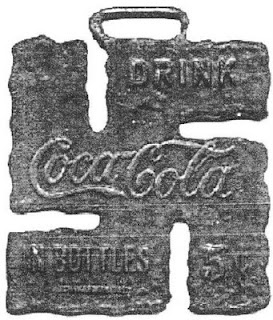Belching Out the Devil by Mark Thomas, 2008
Mammon Review:
Mark Thomas uses a comedic-cynic style to investigate reports of abuse by Coca Cola around the world. Seems Coca Cola is not shy about using strong arm tactics to enhance its bottom line and secure its market share. In Colombia, any worker deemed left of center is seen as a union conspirator. Workers were literally shot dead on the production floor and outside the bottling plant by company paramilitary. [The Coca Cola Corporation distances itself from the bottlers by the legality of ownership, hence responsibility.] In India, Coca Cola builds plants that deplete aquifers and pollute local streams; adversely and severely impacting local populations and farmers. In Turkey, a plant sit-in by workers and family members attempting to unionize were showered with tear gas and beat with riot sticks. In El Salvador, the harvesting of sugar cane destined for Coca Cola uses child labor. In Mexico, Coca Cola bullies and sanctions small shop owners into only carrying Coke products. [Mexico’s President Vicente Fox (2000-2006) had previously been President of Coca Cola Mexico.]
Mark Thomas starts his journey with a visit to the World of Coca Cola in Atlanta, a display of marketing hubris with a gift shop, and ends at the Delaware annual shareholders meeting, where executives pontificate Coca Cola’s Corporate Social Responsibility. At the meeting, Mark Thomas meets up with B. Wardlaw, The Coca-Cola Anarchist and substantial Coca Cola shareholder, and Ray Rogers, coordinator of the Killer Coke campaign. These collective activists strip back the marketing veneer and expose a dark side to corporate globalization.
India Coca-Cola compensation law is passed in Kerala
24 Feb 2011
The southern Indian state of Kerala has passed a new law that will allow people to seek compensation from the soft-drink giant Coca-Cola. The company is mired in controversy over its bottling operation in Palakkad district, which campaigners say has caused environmental damage. They say it has also led to a severe water shortage in the area. The state government says the plant "over-extracted" ground water at the site, which led to shortages of drinking water. It says the disposal of sludge containing metals from the plant affected crops as well as the health of local people - causing skin diseases, breathing problems and other ailments.



















